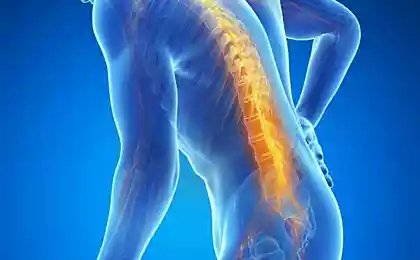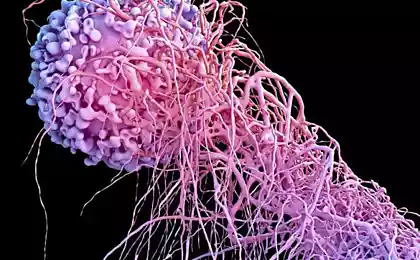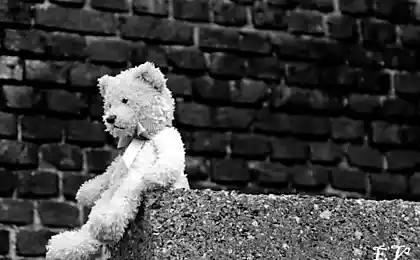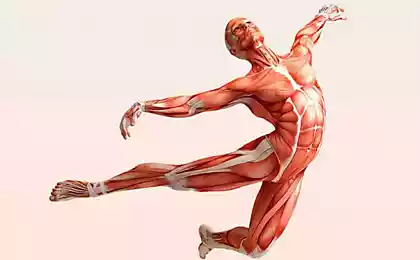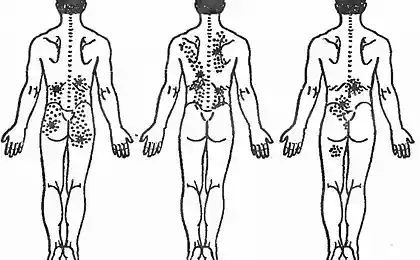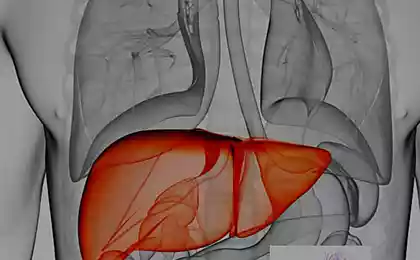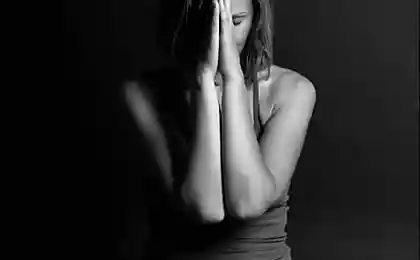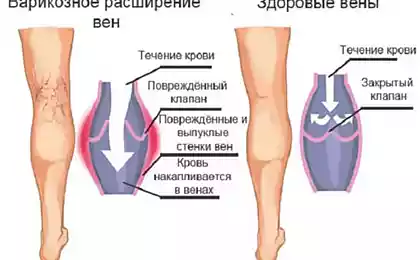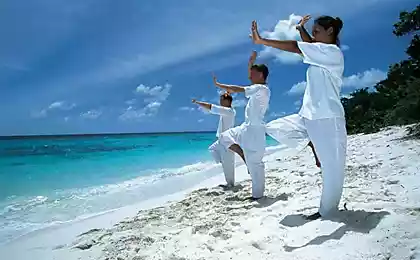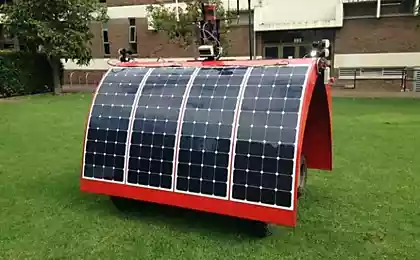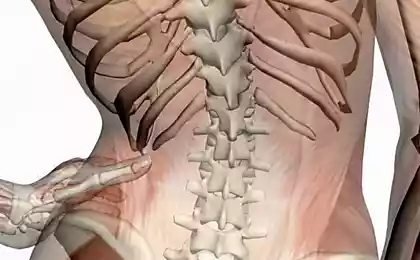507
The method of Katharina Schroth for the treatment of scoliosis
Gymnastics Katharina Schroth scoliosis is used in rehabilitation centers due to the fact that it optimally combines power, respiratory and restorative exercises.
Its Creator,Katherine Meal, have tested the effectiveness of his method. She suffered a lateral curvature of the spine, and to get rid of it has developed a set of exercises. Official recognition exercises, the Meal received in Germany in 1921, when it was opened the first clinic for the treatment of scoliosis, which used breathing exercises Meal.

Catarina Meal
The basic principles of gymnastics:
The Foundation for effective treatment of scoliosis is based on the idea of the Creator of the method about Citotel sick person functionality resembles a ball.When it affects pressure, it flattens out. This principle forms the basis of the complex therapeutic exercises.
The method is based on proper breathing.That he plays a leading role in removing the incorrect stereotype of breathing due to the displacement of internal organs in scoliosis.
At lateral offset in the thoracic spine can be traced to the narrowing of the intercostal spaces on the affected side. As a result, light from the contraction of the chest cells get less oxygen. They cannot deal. No breathing exercise this pathology can not be repaired.
Rotation of the spine (twisting along the vertical axis) during deformation of the spine also causes the instability of vertebrae, so any careless movement causes a person pain. To prevent it in the medical complex of Katharina includes exercises to increase strength endurance muscles.
The displacement of the vertebrae is eliminated by a unique system of breathing exercises that have been designed by the daughter of Katharina Meal, Leonard. She is a physiotherapist by education. Over many years of practice, Leonard managed a Meal is to work out the technique of removing subluxations of the vertebrae, which are always observed in the frontal deformation of the vertebral axis.
The cornerstone of the method is breathing in the Meal. What I mean is that for the corrective effect of exercise necessary to teach the patient to breathe properly during their execution, formed the scoliotic contrary to the stereotype of the respiratory movements of the chest. The fact that in scoliosis the chest involved in breathing is asymmetric.
Rotation of the spine leads to a change in position of the ribs: the ribs are attached thereto with the convex side of the arc, go outside (side and back) and edges are attached with the opposite concave side of the arc, go inside (forward and from the sides toward the middle), sink, intercostal spaces on this side are narrowed. The thorax has a suction effect relative to the lungs in the pleural cavity the negative pressure. Therefore, the lungs follow with the inhale expanding the rib cage, filling its volume and repeating its shape.
Scoliosis breath in a greater degree occurs with the convex side of the arc than with the opposite. With each respiratory excursions (movement), the situation gradually exacerbated: intercostal spaces on the convex side of the arc expand, the intercostal muscles are stretched and the concave side inhales less. I.e., the respiratory motion occur in the same direction as the rotation of the spine, and aggravate it. Thus is formed the rib bulge, gibbus. The rate of its formation depends on the rate of progression of scoliosis, a fast increase in the arcs of curvature and rotation of vertebrae displacement of the ribs sharper and more asymmetric breath.
Therefore, it is due to breathing, the most visible manifestation of the rotation of the spine is the rotation of the thorax: gibbus and contralateral (opposite side) retraction of the ribs. That is, if viewed from the rear. Front reverse pattern: rib, forming the rear gibbous, go, sink, and on the opposite side to go forward (i.e., front gibbus).
Of course, all people from birth breathe without thinking. Similarly people with scoliosis. K. Meal also developed a corrective asymmetrical breathing, protivoprotosanoe scoliosis. The patient must consciously breathe-invading areas of the chest.
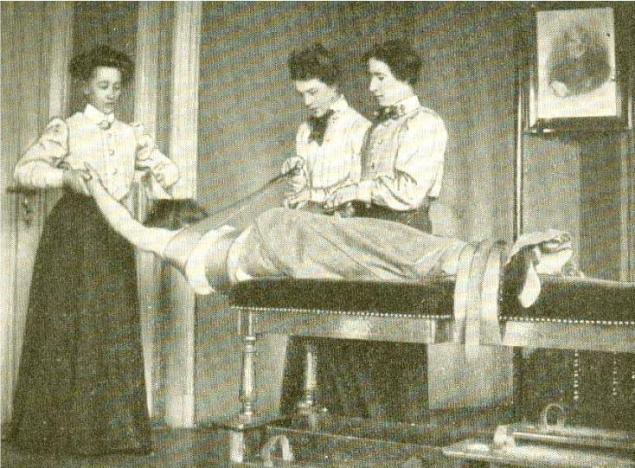
Under the most widespread version of scoliosis with thoracic and lumbar arches these zones are:
The back side of the concave lumbar arc (the lower ribs and waist from this side)
The rear concave side of the thoracic arch (approximately the level of the angle of the scapula)
The front on the side of the sternum, where the pectoral arch, below the clavicle.
The exact location and extent of these zones depends on the level of the top of each arc in each patient and it is noted on the diagram in a special booklet that he issued. There are marked all the areas of correction and position correction of small pouches – pads (with rice) that are placed in the exercises lying down with the opposite (convex) side under the exposed ribs and muscle rollers – to limit the breath in these areas.
At first glance, it is unclear how consciously one side to breathe, and the other not to breathe. But, if we remember that the intercostal muscles, which are responsible for movement of ribs during breathing, are the skeletal striated muscles, controlled by consciousness (in contrast to smooth muscle of internal organs, acting independently of our consciousness), and limb muscles, for example, which obey our command, it no longer sounds so strange.
To a certain extent arbitrary regulation of breathing possible. And it actually really is a master both children and adults.
Classes for respiratory therapy happen. They individual. Prior to this, the patient already knows what type of scoliosis he had, he explained, where there are some areas on his torso and noted on the diagram, haunting the places that he needs to learn to breathe.
The patient lies on the stomach on a soft massage table-a couch with a hole for the face, so as not to twist the neck and to breathe freely. The instructor does a light pressure massage disengaging zone to keep the patient focused and remember its location.
Then the instructor asks to take a breath this place and thus raise his arm, after each attempt to re-stimulating the memorization of this area massage. The patient tries to breath, raise hand instructor, then reach and touch the breath of his slightly raised hand.
As the correct type of breathing is diaphragmatic, the sequence of the breath sinking down zones from the bottom up, i.e.: at the beginning of inhalation, the patient focuses on the lumbar fold (opposite the lumbar cushion), and then inhales sinking down of the chest area (ribs opposite the convexity). The last part of the breath is concentrated on the chest in front, the breath of this area practicing sitting down, facing the instructor.
Exhale at the Meal should be long, the longer the better, and noisy, to be condensed through the lips, thus increasing the resistance to exhalation, and, consequently, the work of the muscles, particularly the intercostal muscles, with high proprioceptive sensitivity (i.e., increased reflex contraction of the muscles under tension).
Instructor while exhaling heavily presses down on the convex side: thus prompting the patient to exhale maximum air out, as much as possible to strain the muscles of this area, pull the stretched muscles between the ribs, reduce enlarged intercostal spaces. I.e., the expiration is not passive, but active, with great tension of the muscles of the convex side of the arc. Thus, the patient learns and gets used, "how" to inhale, how to exhale.
Skill trains every day and monitored by everyone, individually and in the group. In my experience, the ability and skill waste of breath sinking areas, asymmetrical breathing, to the greatest extent determines the corrective effect Meal therapy.
All the exercises in the Meal are executed only when the condition of such a breath.
The exercises are mostly static, giving an isometric load on the muscles. As the muscles in scoliosis also work asymmetrically, with one side arc they hyperinflate, on the other tightened and shortened, the point of the exercise not the exercise or the creation of a common "muscle", which is when the scoliosis is unlikely to be symmetrical and focused corrective, upravlyayuschim effect on the deformation of the trunk in three planes (frontal, i.e., lateral, sagittal, i.e., front-back and horizontal).
The main components of the exercise are:
Passive correction. Ie, is developed starting position for the exercise, which in itself gives partial correction of the arcs and deformations allow for the most effective muscular effort with a view to their correction.
Autologice, i.e., samodelkina, stretching the torso. This component is necessary in order to most effectively take a breath sinking areas, increasing by stretching the intercostal spaces, stretching tight muscles on the concave side of the arc. The instructor gives the command "vytyagivaya" and stimulates the movement of the hand along the spine in the direction of traction. Is pulling the head from the shoulders or pulling the pelvis back (depending on exercises) adopted in the corrected position.
Breath at the Meal, sinking areas in a previously specified sequence. The instructor gives the command "inhale" and concerns the haunting of places in the desired sequence, the patient "should" breathing deeply, his hands. The patient knows that with proper corrective breathing in sinking the ribs should move outward (backward), lateral side up and controls it in the mirror and checks his hands.
Active correction. Performing muscular efforts, given a particular exercise (deadlift, emphasis, etc.) during a long exhalation (see above) with a muscle strain the convex side of the arcs.Exercise and built to work, dropped the stretched muscle area rib bulge. The instructor gives the command "out", "masters", stimulating arm muscle contraction of the desired zones, or Recalling the correction direction.
Thus, all muscular exertion on exercise occur only on the exhale, holding the maximum correction achieved through stretching, smoothing sinking zones on the breath and the tension in the muscles. Then the exercises are repeated 24-30 times independently.
Exercises and breathing are controlled by the mirrors, they are front, back, top (ceiling), i.e. the patient needs to see how he's breathing, what muscles strain, how achieves alignment during each exercise. Because breathing accelerated, and efforts are significant, you need to drink a lot, and the Windows open. Before class and after measured growth, the difference can be 1-2 cm published
P. S. And remember, just changing your mind — together we change the world! ©
Source: massage.ru/articles/metod-katariny-shrot-dlya-lecheniya-skolioza
Its Creator,Katherine Meal, have tested the effectiveness of his method. She suffered a lateral curvature of the spine, and to get rid of it has developed a set of exercises. Official recognition exercises, the Meal received in Germany in 1921, when it was opened the first clinic for the treatment of scoliosis, which used breathing exercises Meal.

Catarina Meal
The basic principles of gymnastics:
The Foundation for effective treatment of scoliosis is based on the idea of the Creator of the method about Citotel sick person functionality resembles a ball.When it affects pressure, it flattens out. This principle forms the basis of the complex therapeutic exercises.
The method is based on proper breathing.That he plays a leading role in removing the incorrect stereotype of breathing due to the displacement of internal organs in scoliosis.
At lateral offset in the thoracic spine can be traced to the narrowing of the intercostal spaces on the affected side. As a result, light from the contraction of the chest cells get less oxygen. They cannot deal. No breathing exercise this pathology can not be repaired.
Rotation of the spine (twisting along the vertical axis) during deformation of the spine also causes the instability of vertebrae, so any careless movement causes a person pain. To prevent it in the medical complex of Katharina includes exercises to increase strength endurance muscles.
The displacement of the vertebrae is eliminated by a unique system of breathing exercises that have been designed by the daughter of Katharina Meal, Leonard. She is a physiotherapist by education. Over many years of practice, Leonard managed a Meal is to work out the technique of removing subluxations of the vertebrae, which are always observed in the frontal deformation of the vertebral axis.
The cornerstone of the method is breathing in the Meal. What I mean is that for the corrective effect of exercise necessary to teach the patient to breathe properly during their execution, formed the scoliotic contrary to the stereotype of the respiratory movements of the chest. The fact that in scoliosis the chest involved in breathing is asymmetric.
Rotation of the spine leads to a change in position of the ribs: the ribs are attached thereto with the convex side of the arc, go outside (side and back) and edges are attached with the opposite concave side of the arc, go inside (forward and from the sides toward the middle), sink, intercostal spaces on this side are narrowed. The thorax has a suction effect relative to the lungs in the pleural cavity the negative pressure. Therefore, the lungs follow with the inhale expanding the rib cage, filling its volume and repeating its shape.
Scoliosis breath in a greater degree occurs with the convex side of the arc than with the opposite. With each respiratory excursions (movement), the situation gradually exacerbated: intercostal spaces on the convex side of the arc expand, the intercostal muscles are stretched and the concave side inhales less. I.e., the respiratory motion occur in the same direction as the rotation of the spine, and aggravate it. Thus is formed the rib bulge, gibbus. The rate of its formation depends on the rate of progression of scoliosis, a fast increase in the arcs of curvature and rotation of vertebrae displacement of the ribs sharper and more asymmetric breath.
Therefore, it is due to breathing, the most visible manifestation of the rotation of the spine is the rotation of the thorax: gibbus and contralateral (opposite side) retraction of the ribs. That is, if viewed from the rear. Front reverse pattern: rib, forming the rear gibbous, go, sink, and on the opposite side to go forward (i.e., front gibbus).
Of course, all people from birth breathe without thinking. Similarly people with scoliosis. K. Meal also developed a corrective asymmetrical breathing, protivoprotosanoe scoliosis. The patient must consciously breathe-invading areas of the chest.

Under the most widespread version of scoliosis with thoracic and lumbar arches these zones are:
The back side of the concave lumbar arc (the lower ribs and waist from this side)
The rear concave side of the thoracic arch (approximately the level of the angle of the scapula)
The front on the side of the sternum, where the pectoral arch, below the clavicle.
The exact location and extent of these zones depends on the level of the top of each arc in each patient and it is noted on the diagram in a special booklet that he issued. There are marked all the areas of correction and position correction of small pouches – pads (with rice) that are placed in the exercises lying down with the opposite (convex) side under the exposed ribs and muscle rollers – to limit the breath in these areas.
At first glance, it is unclear how consciously one side to breathe, and the other not to breathe. But, if we remember that the intercostal muscles, which are responsible for movement of ribs during breathing, are the skeletal striated muscles, controlled by consciousness (in contrast to smooth muscle of internal organs, acting independently of our consciousness), and limb muscles, for example, which obey our command, it no longer sounds so strange.
To a certain extent arbitrary regulation of breathing possible. And it actually really is a master both children and adults.
Classes for respiratory therapy happen. They individual. Prior to this, the patient already knows what type of scoliosis he had, he explained, where there are some areas on his torso and noted on the diagram, haunting the places that he needs to learn to breathe.
The patient lies on the stomach on a soft massage table-a couch with a hole for the face, so as not to twist the neck and to breathe freely. The instructor does a light pressure massage disengaging zone to keep the patient focused and remember its location.
Then the instructor asks to take a breath this place and thus raise his arm, after each attempt to re-stimulating the memorization of this area massage. The patient tries to breath, raise hand instructor, then reach and touch the breath of his slightly raised hand.
As the correct type of breathing is diaphragmatic, the sequence of the breath sinking down zones from the bottom up, i.e.: at the beginning of inhalation, the patient focuses on the lumbar fold (opposite the lumbar cushion), and then inhales sinking down of the chest area (ribs opposite the convexity). The last part of the breath is concentrated on the chest in front, the breath of this area practicing sitting down, facing the instructor.
Exhale at the Meal should be long, the longer the better, and noisy, to be condensed through the lips, thus increasing the resistance to exhalation, and, consequently, the work of the muscles, particularly the intercostal muscles, with high proprioceptive sensitivity (i.e., increased reflex contraction of the muscles under tension).
Instructor while exhaling heavily presses down on the convex side: thus prompting the patient to exhale maximum air out, as much as possible to strain the muscles of this area, pull the stretched muscles between the ribs, reduce enlarged intercostal spaces. I.e., the expiration is not passive, but active, with great tension of the muscles of the convex side of the arc. Thus, the patient learns and gets used, "how" to inhale, how to exhale.
Skill trains every day and monitored by everyone, individually and in the group. In my experience, the ability and skill waste of breath sinking areas, asymmetrical breathing, to the greatest extent determines the corrective effect Meal therapy.
All the exercises in the Meal are executed only when the condition of such a breath.
The exercises are mostly static, giving an isometric load on the muscles. As the muscles in scoliosis also work asymmetrically, with one side arc they hyperinflate, on the other tightened and shortened, the point of the exercise not the exercise or the creation of a common "muscle", which is when the scoliosis is unlikely to be symmetrical and focused corrective, upravlyayuschim effect on the deformation of the trunk in three planes (frontal, i.e., lateral, sagittal, i.e., front-back and horizontal).
The main components of the exercise are:
Passive correction. Ie, is developed starting position for the exercise, which in itself gives partial correction of the arcs and deformations allow for the most effective muscular effort with a view to their correction.
Autologice, i.e., samodelkina, stretching the torso. This component is necessary in order to most effectively take a breath sinking areas, increasing by stretching the intercostal spaces, stretching tight muscles on the concave side of the arc. The instructor gives the command "vytyagivaya" and stimulates the movement of the hand along the spine in the direction of traction. Is pulling the head from the shoulders or pulling the pelvis back (depending on exercises) adopted in the corrected position.
Breath at the Meal, sinking areas in a previously specified sequence. The instructor gives the command "inhale" and concerns the haunting of places in the desired sequence, the patient "should" breathing deeply, his hands. The patient knows that with proper corrective breathing in sinking the ribs should move outward (backward), lateral side up and controls it in the mirror and checks his hands.
Active correction. Performing muscular efforts, given a particular exercise (deadlift, emphasis, etc.) during a long exhalation (see above) with a muscle strain the convex side of the arcs.Exercise and built to work, dropped the stretched muscle area rib bulge. The instructor gives the command "out", "masters", stimulating arm muscle contraction of the desired zones, or Recalling the correction direction.
Thus, all muscular exertion on exercise occur only on the exhale, holding the maximum correction achieved through stretching, smoothing sinking zones on the breath and the tension in the muscles. Then the exercises are repeated 24-30 times independently.
Exercises and breathing are controlled by the mirrors, they are front, back, top (ceiling), i.e. the patient needs to see how he's breathing, what muscles strain, how achieves alignment during each exercise. Because breathing accelerated, and efforts are significant, you need to drink a lot, and the Windows open. Before class and after measured growth, the difference can be 1-2 cm published
P. S. And remember, just changing your mind — together we change the world! ©
Source: massage.ru/articles/metod-katariny-shrot-dlya-lecheniya-skolioza
The important thing is that parents miss in raising children
20 recommendations of Ayurveda for weight loss
